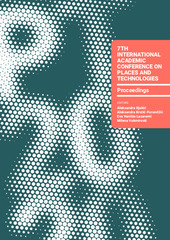| dc.contributor | Djukić, Aleksandra | |
| dc.contributor | Krstić-Furundžić, Aleksandra | |
| dc.contributor | Vaništa Lazarević, Eva | |
| dc.contributor | Vukmirović, Milena | |
| dc.creator | Ćuković Ignjatović, Nataša | |
| dc.creator | Ignjatović, Dušan | |
| dc.date.accessioned | 2023-11-27T21:56:32Z | |
| dc.date.available | 2023-11-27T21:56:32Z | |
| dc.date.issued | 2020 | |
| dc.identifier.isbn | 978-86-7924-240-2 | |
| dc.identifier.uri | https://raf.arh.bg.ac.rs/handle/123456789/1700 | |
| dc.description.abstract | Due to its geological specificities, Vojvodina is abundant with various balneological resources. During 2018, an extensive multidisciplinary research was conducted in order to investigate the current condition on 50 sites, explore the quality and quantity of relevant resources and offer proposals for developing contemporary balneology facilities. The architectural programs spanned from modest drinking fountains to complex developments and resorts with variety of facilities. Throughout the process, a series of model units were developed and tailored to match the medical and therapeutical requirements with the imperatives of environmentally conscious, sustainable and resilient architecture.
Typological and modular approach was identified as the most efficient both for effective development and construction in various circumstances as well as for promoting the balneology as a rediscovered potential for healthcare tourism, well-being and revival of some local communities. Site-specific architectural design is perceived as one of the key premises of green architecture; however, the topology of Vojvodina planes has enabled the development of modular units that are easily adjusted to the specific site. These units were developed aiming to achieve different functional and esthetical variations using the same basic structure, building principles and components. Furthermore, this approach enables seasonal variations and optimisations in facility’s capacity, allowing the permanent, year-round operation avoiding unnecessary operation costs and maintaining favourable ecological footprint. Finally, by using the optimised units for potential extensions, maintaining and improving of building performance is secured, while keeping recognizable and uncompromised architectural language throughout facility’s life span. The use of passive design features and on-site renewable energy resources (solar and geothermal) was also taken into the consideration from the conceptual design phase.
The paper systematically presents the scope and achieved results of the research process with an overview of selected case study examples showing the application options in various conditions. | sr |
| dc.language.iso | en | sr |
| dc.publisher | Belgrade : University of Belgrade, Faculty of Architecture | sr |
| dc.relation | Бање Војводине - Детаљна балнеолошка, хидрогеолошка, хидрохемијска, изотопска, климатолошка, просторно развојна и техноекономска истраживања на 51 локалитету у АП Војводини | sr |
| dc.rights | openAccess | sr |
| dc.source | Keeping up with technologies to act responsively in urban environment [Elektronski izvor] : conference proceedings / 7th international Academic Conference on Places and Technologies | sr |
| dc.subject | Balneology | sr |
| dc.subject | Green Architecture | sr |
| dc.subject | Resilient Architecture | sr |
| dc.subject | Healthcare | sr |
| dc.subject | Well-being | sr |
| dc.title | Models for Contemporary Exploitation of Balneological Potential in Vojvodina | sr |
| dc.type | conferenceObject | sr |
| dc.rights.license | ARR | sr |
| dcterms.abstract | Игњатовић, Душан; Ћуковић Игњатовић, Наташа; | |
| dc.citation.spage | 241 | |
| dc.citation.epage | 247 | |
| dc.identifier.doi | 10.18485/arh_pt.2020.7.ch28 | |
| dc.identifier.fulltext | http://raf.arh.bg.ac.rs/bitstream/id/5591/bitstream_5591.pdf | |
| dc.type.version | publishedVersion | sr |

